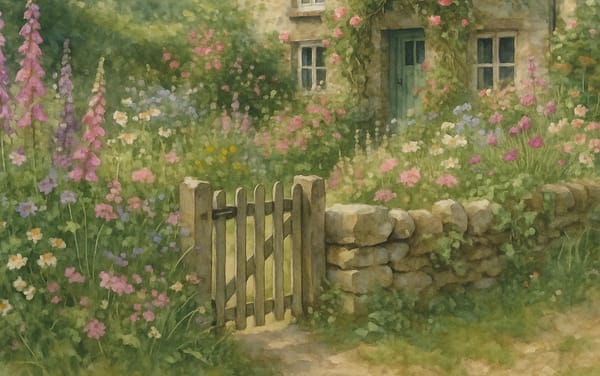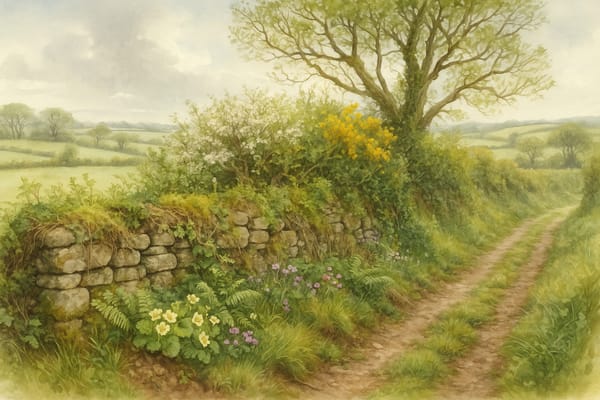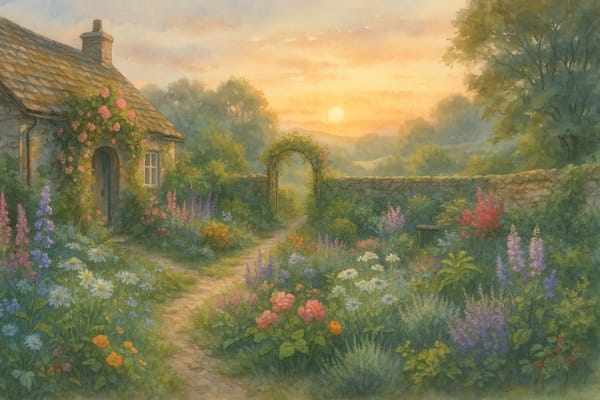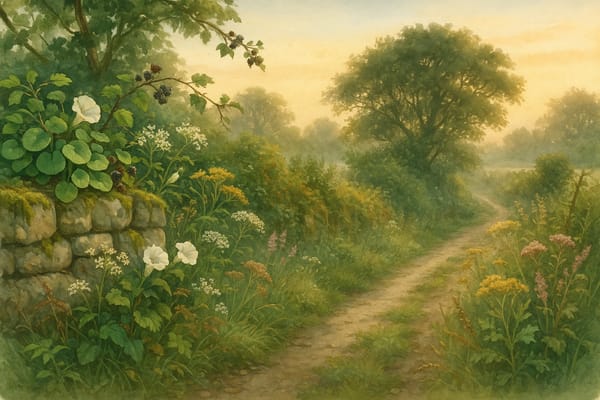How to Embrace Rustic Charm with a Modern, Ecological Twist
Walk through any old Cornish village and you’ll find it: that quietly enchanting cottage garden, where foxgloves lean through gateposts, roses tangle with honeysuckle, and stone walls cradle soft drifts of wildflowers. It feels effortless. Timeless. Alive.
But beneath this seeming ‘beautiful chaos’ is something more — a deep connection with nature that weaves together tradition, wildlife, and the gentle art of letting the garden grow on its own terms.
At The Cornish Garden, we believe today’s cottage garden can be both a romantic sanctuary and a living ecosystem — a space where rustic charm meets ecological mindfulness.
The Beauty of Overflowing Abundance
A true Cornish cottage garden invites plants to spill, scramble, and self-seed. It’s a dance of cultivated blooms with wild wanderers: climbing roses and self-seeded foxgloves, old-fashioned aquilegias jostling with herb robert and forget-me-nots.
Letting plants find their own way softens hard edges, blends colors naturally, and fosters a dynamic, ever-changing display — one that offers nectar, shelter, and soil health all at once.
Try This:
- Layered Planting: Mix classic cottage favourites with native wildflowers — think foxglove, thrift, knapweed, scabious, and wild pansy.
- Welcome Self-Seeders: Let poppies, aquilegias, and forget-me-nots move around freely — they fill gaps and surprise you each season.
The Charm of Tumbled Stone and Rustic Features
Cornish stone is a silent storyteller. Old granite walls, mossy paths, and weathered stone troughs lend texture, history, and habitat. Plants creep into crevices, lichen finds its foothold, and wildlife takes up residence.
Bring it Home:
- Use reclaimed stone for low walls, paths, or edging.
- Allow moss, ferns, or thrift to colonise cracks naturally.
- Repurpose old containers — buckets, troughs, even logs — for wild planters or birdbaths.
Wild Structure and Gentle Borders
Forget neatness. The magic lies in relaxed boundaries: a hedgerow of hawthorn and hazel, a soft drift of meadow flowers, a tangle of hedgerow at the garden’s edge. These “wild structures” invite birds, insects, and mammals into your garden’s story.
Wild Touches to Try:
- Create a mini Cornish hedge with stone and earth — plant wildflowers in the gaps.
- Leave lawn areas to grow into meadow patches — mow in late summer to maintain biodiversity.
- Install a pond or water-filled stone basin for amphibians and birds.
The Modern Ecological Twist
Today’s cottage gardens can embrace old-world beauty while honouring ecological values. Peat-free compost, rainwater harvesting, and chemical-free care aren’t just good practice — they’re a natural extension of the garden’s wild heart.
Ecological Practices to Embrace:
- Avoid pesticides; encourage companion planting and natural predators.
- Use self-seeding plants to fill space, protect soil, and reduce maintenance.
- Compost garden waste on-site to nourish living soil.
A Living, Breathing Wildlife Haven
Birdsong, bees, butterflies — all thrive when you let go of perfection. Leave messy corners, log piles, and seed heads standing. Scatter pots filled with native plants around doorways or along paths.
Create Habitat with Heart:
- Add bee hotels, bird boxes, and piles of logs for overwintering insects.
- Plant nectar-rich, single-flowered varieties for easy pollinator access.
- Grow herbs and dyeplants like thyme, weld, or madder for both beauty and biodiversity.
In Essence: Let the Garden Wander
A Cornish cottage garden isn’t a showpiece — it’s a living, shifting story of abundance, life, and quiet joy. Its heart lies in the way it spills beyond the edges, invites nature in, and offers a home for both people and wildlife.
By blending rustic tradition with thoughtful ecological care, you create more than a garden — you cultivate a thriving, beautiful corner of Cornwall’s living heritage right outside your door.
Celebrate the tangle, welcome the wanderers, and let nature write its own story in your garden.











